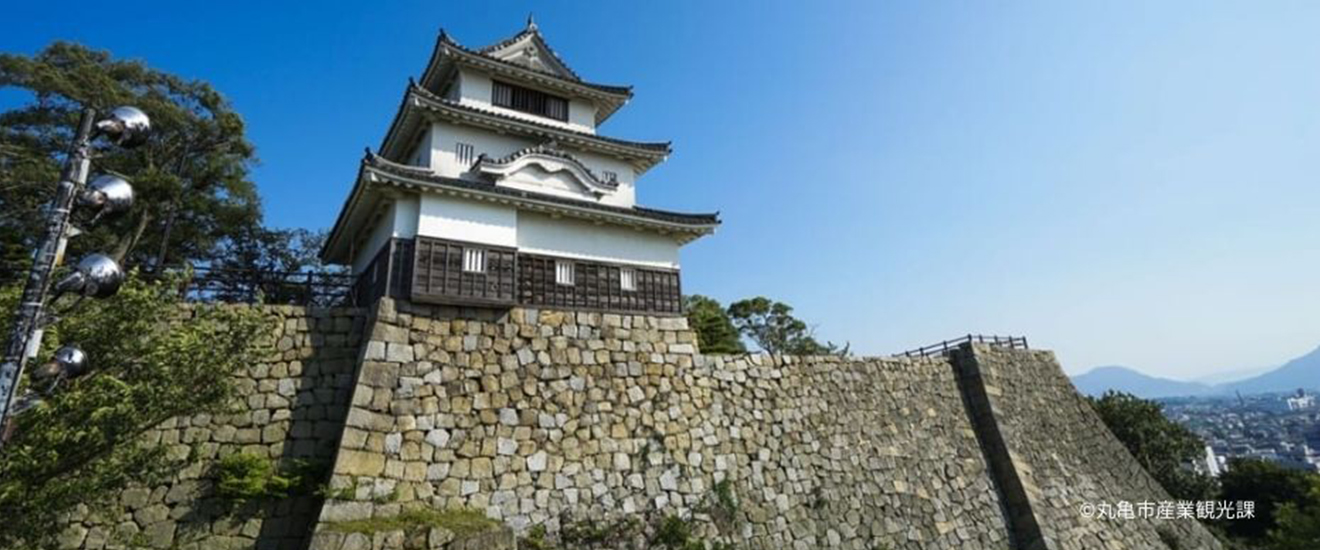
For travelers who want to learn more about the unique Japanese culture of the “Samurai” and the Edo period.
Samurai Culture of Edo and Japan’s Famous Castles in Kagawa and Hyogo
Meeting Point: Okayama Station
Finish Point: Himeji Station
Recommended Season: All season
Duration: 5 days
Tour Highlights
Explore Japan’s Iconic Castles: Discover the unique charm of Marugame, Ako, and Himeji Castles
Step Back in Time: Visit historic Edo-era sites like the charming Kasashima Village on Shiwaku Island, Ako, and Engyoji Temple
Message from Tour Planner
Discover Timeless Beauty: Along the coast of the Seto Inland Sea, you’ll find charming old towns that echo the elegance of pre-Edo Japan. As a crucial hub for transportation and water routes, this region is home to magnificent castles that have withstood the test of time. These untouched historical sites offer travelers a glimpse into Japan’s rich traditions. In collaboration with the tourism associations of Hyogo and Kagawa Prefectures, we proudly present the “Kagawa-Hyogo Collaborative Tourism Project 2024.” This tour will take you on an in-depth exploration of both prefectures, featuring must-visit destinations.
Embark on a journey through the castle towns of Marugame and Ako, visit the historic Kasashima Village on Shiwaku Island, and experience the breathtaking views at Unpenji Temple, a revered pilgrimage site in Shikoku. In Himeji, enjoy an exclusive tour of Engyoji Temple, known as the “Enryakuji of the West.” Conclude your adventure with a visit to the UNESCO World Heritage Site, Himeji Castle, and savor a delightful meal at the renowned restaurant “Kawato.”
Immerse yourself in the history, culture, and cuisine of these captivating regions on this enchanting autumn journey.
Recommended Program
Embark on a Journey Through the Majestic Castles of the Seto Inland Sea
① One of the Twelve Surviving Original Castle Towers: “Marugame Castle”
Step into History: Marugame Castle, renowned as the “Castle of Stone Walls,” was constructed during the early Edo period when stone wall building techniques were at their peak. Built over five years by Ikoma Chikamasa, the lord of Marugame Domain, its impressive stone structures are a testament to this era’s architectural excellence. The castle tower, perched atop these magnificent walls, is one of the twelve surviving original wooden castle towers in Japan. Experience the grandeur of castle architecture that has stood the test of time for over 400 years.
② Ako Castle and the Historic Sites of “Chushingura” which is a famous Japanese tale of samurai loyalty and revenge.
Discover the Allure of Ako: Nestled along the Seto Inland Sea and facing Harima-nada, Ako is a place steeped in history. During the early Edo period, the Asano family, relocated from Kasama in Ibaraki Prefecture, constructed Ako Castle and developed the surrounding castle town and salt fields. Known as the residence of Asano Naganori, the central figure of the legendary “Chushingura,” Ako is home to historic sites like Oishi Shrine, dedicated to the 47 loyal samurai, and the former residence of Oishi Kuranosuke. Experience the revival of its historical charm at Ako Castle, recognized as one of Japan’s Top 100 Castles, and explore the rich history at the local museum. Embark on a journey through time in Ako.
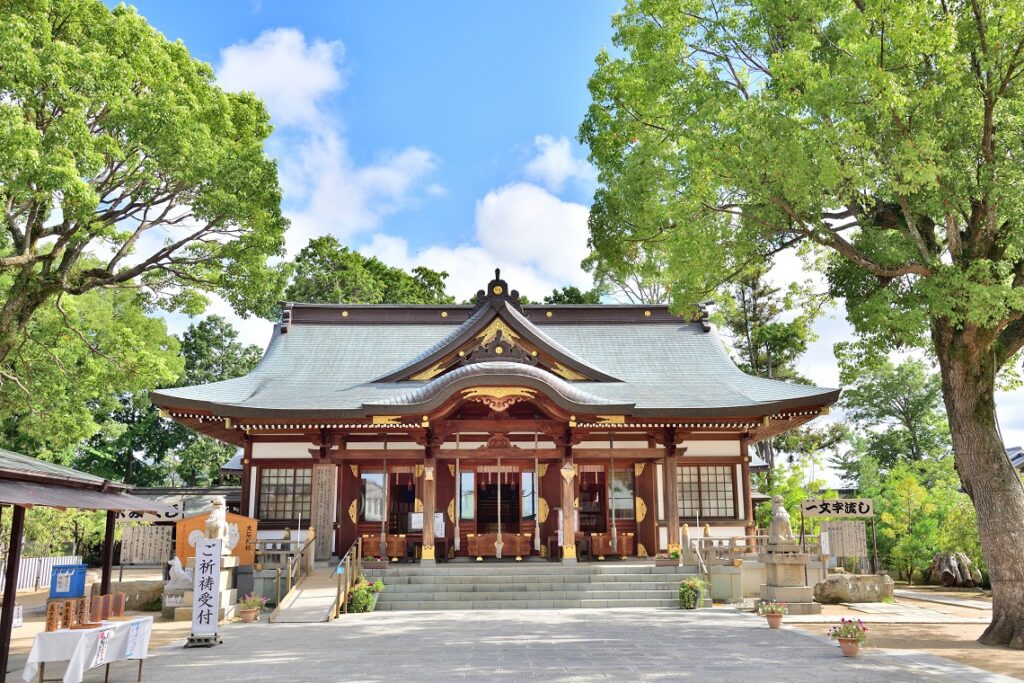
Oishi Shrine, dedicated to the Loyal Samurai of Ako
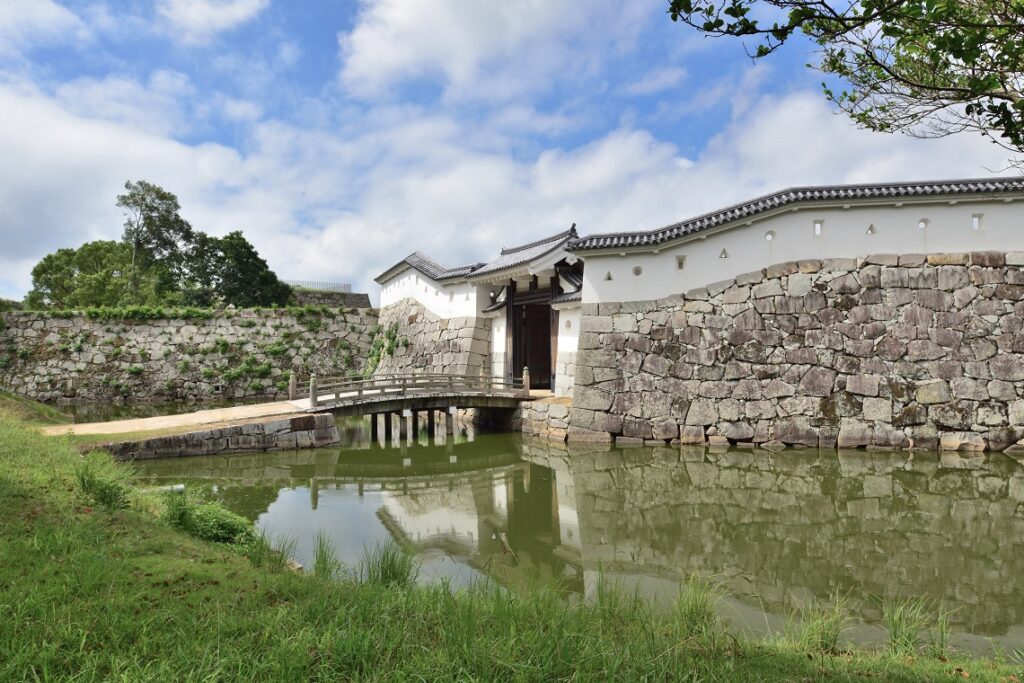
Ako Castle is a coastal flatland castle facing Harima-nada
③ Himeji Castle, a UNESCO World Heritage Site and National Treasure
Step into History at Himeji Castle: As a quintessential example of Azuchi-Momoyama period architecture, Himeji Castle stands as one of the few castles in Japan that retains its original structure. Affectionately known as the “White Heron Castle” for its elegant silhouette, this National Treasure is the only castle in Japan registered as a UNESCO World Heritage Site. Immerse yourself in its timeless beauty and explore its storied halls with a knowledgeable guide. Don’t miss the chance to visit this iconic symbol of Japan’s rich cultural heritage.
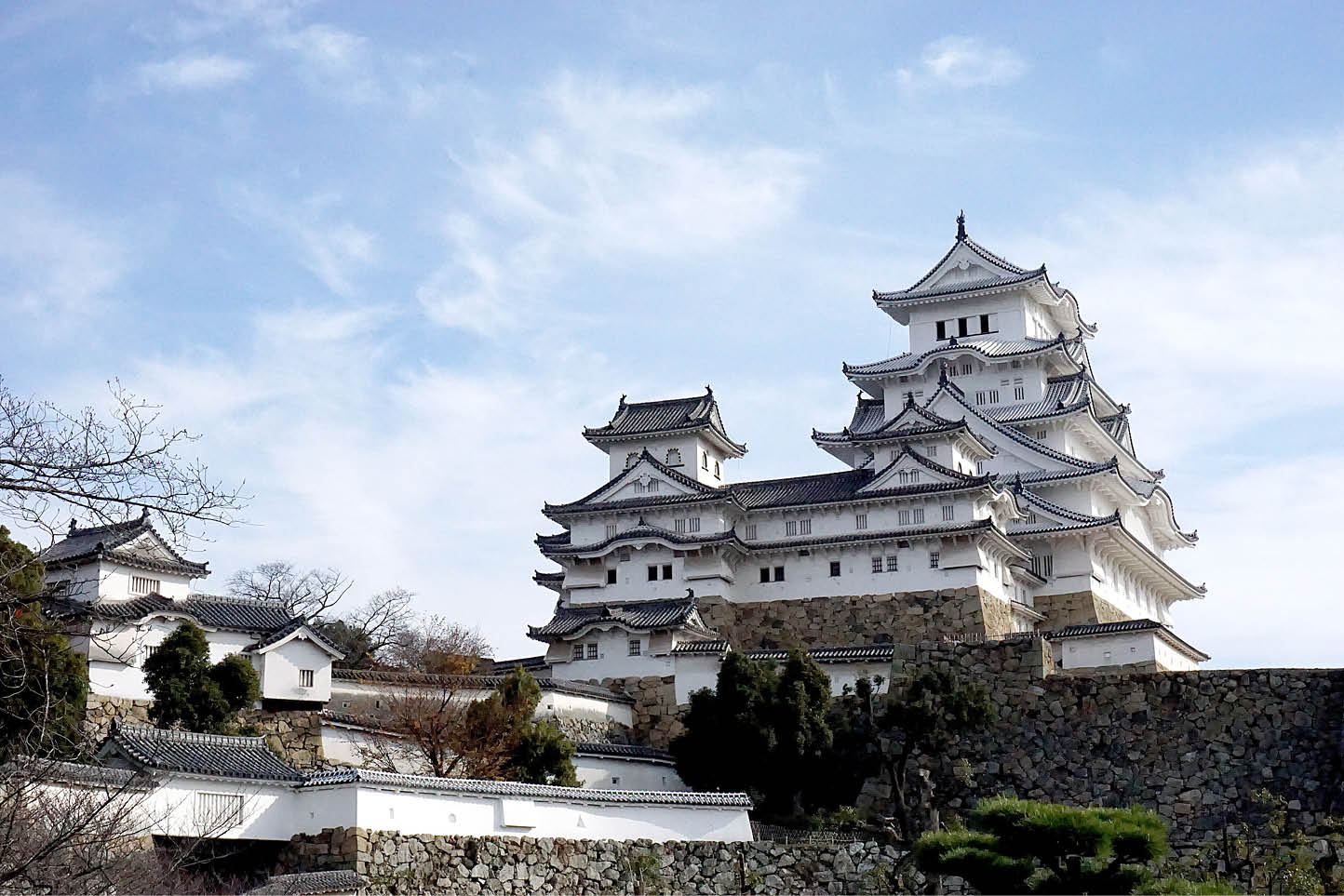
Himeji Castle, a National Treasure affectionately known as the “White Heron Castle”
Discover the Timeless Charm of Old Japan
① Nakatsu Banshoen, the Garden of the Marugame Kyogoku Family
Explore the Enchanting Nakatsu Banshoen: Nestled on the outskirts of Marugame, this exquisite garden was crafted as a retreat for the Kyogoku family, the lords of Marugame. Experience the serene beauty of landscapes inspired by the ancestral home of the Kyogoku family, Omi, and Lake Biwa, all within a compact yet diverse garden setting. The garden also houses the Marugame Museum of Art, where you can admire masterpieces by renowned artists like Millet and Corot. Don’t miss the Marugame Uchiwa Museum, where you can witness the art and history of Marugame’s famous fan-making tradition. A visit here promises a delightful blend of nature, art, and culture.
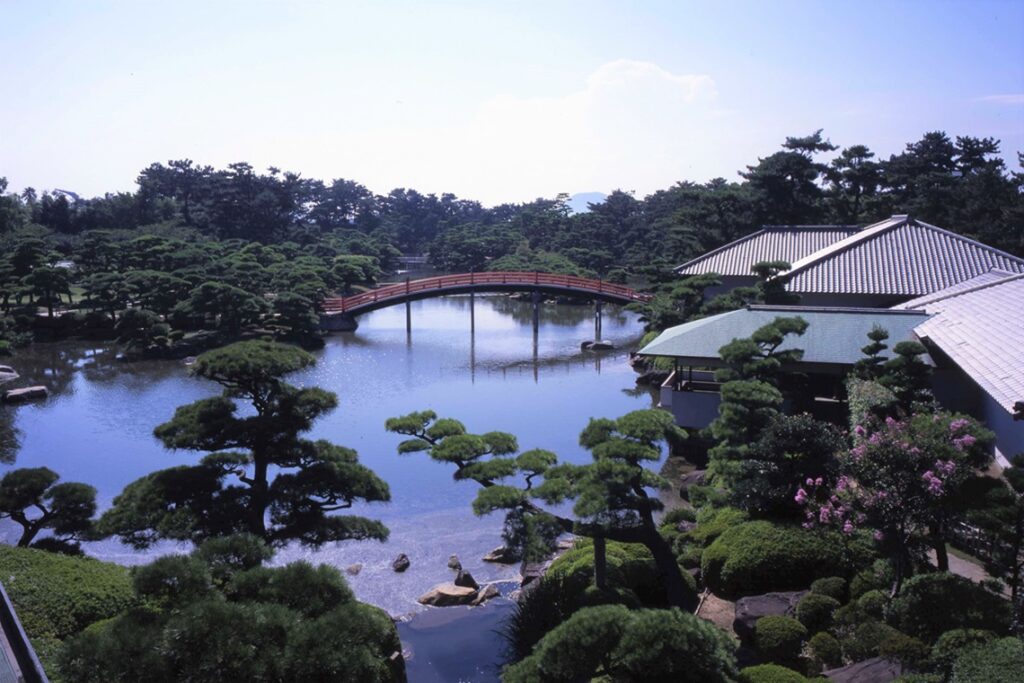
Nakatsu Banshoen, built as a villa for the Marugame Kyogoku family
©(公社)香川県観光協会
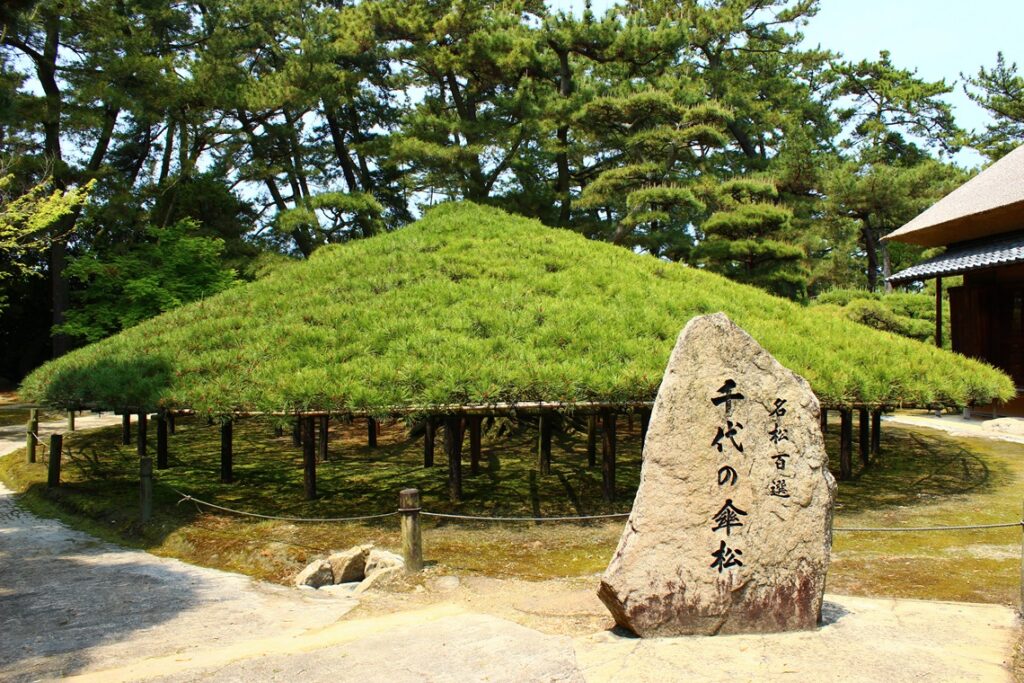
Chiyo no Kasamatsu, a 600-year-old pine tree
©(公社)香川県観光協会
② Kashima Settlement, an Important Preservation District for Groups of Traditional Buildings on “Shiwaku Honjima”
Discover the Enchanting Shiwaku Honjima: Once a thriving hub recognized by the great rulers Oda, Toyotomi, and Tokugawa, Shiwaku Honjima flourished as the home base for seafarers. Granted special trading privileges, the island prospered through maritime commerce. During the Edo period, it enjoyed unique self-governance under the “Ninmyo” system, where 650 individuals shared land ownership, and four elders, known as “Toshiyori,” managed affairs in rotation. This distinctive system was exclusive to Shiwaku Honjima among Japan’s 300 domains. The island’s shipbuilding skills advanced alongside its maritime industry, leaving a legacy still visible today.
Explore the historic Kashima Settlement, the only area in Kagawa Prefecture designated as an Important Preservation District for Groups of Traditional Buildings. Here, you can stroll through Edo-period streets adorned with stunning white plaster walls, lattice windows, and wooden fences crafted by the renowned “Shiwaku carpenters.” As you wander, you’ll experience the island’s unique atmosphere, distinct from other preservation districts. Shiwaku Honjima offers a captivating blend of history, culture, and architectural beauty that beckons you to visit
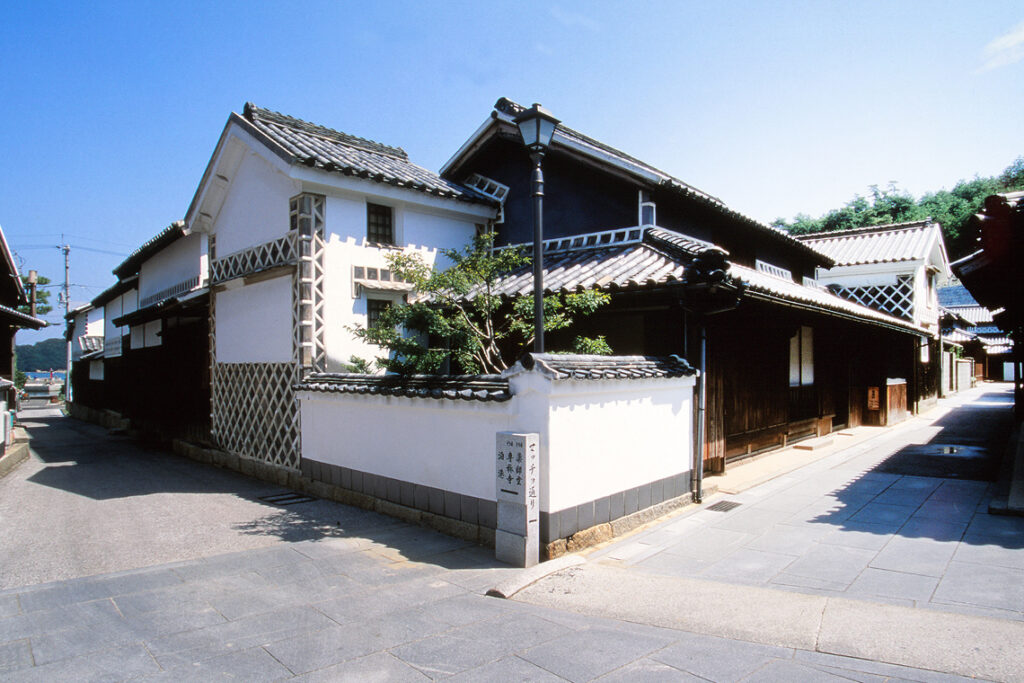
Kashima Settlement, Kagawa Prefecture’s only Important Preservation District for Groups of Traditional Buildings ©(公社)香川県観光協会

The office where four elders, selected from the Ninmyo, conducted governmental affairs ©(公社)香川県観光協会
③ Special Viewing of “Shoshazan Engyoji,” known as the Mount Hiei of the West
Step into a world of ancient history and spiritual serenity at “Shoshazan Engyoji,” a temple founded in 966 with over a millennium of heritage. Revered as the “Mount Hiei of the West,” this esteemed temple is one of the three major Tendai sect training centers. The temple grounds are home to numerous national and prefectural cultural treasures, offering a glimpse into a mystical, secluded realm.
During your visit, enjoy a guided tour of the temple grounds, including a special viewing of the normally closed Jomyoin, a designated Important Cultural Property. This sub-temple, built by the feudal lord Akamatsu Mitsusuke to honor his 16-year-old daughter’s memory, features highlights such as the Eleven-Faced Kannon Bodhisattva and exquisite sliding door paintings by Kano Eino.
For lunch, savor a traditional Buddhist vegetarian meal at the Juryo-in, another Important Cultural Property. This unique experience at Shoshazan Engyoji promises to be a journey of cultural and spiritual discovery that you won’t want to miss.

omyoin, featuring sliding door paintings and murals by the Kano school (photographed during the visit)

During this time of year, the trees on the temple grounds are adorned with vibrant colors (the state of the autumn foliage may vary depending on weather conditions).
Visit Chichibugahama, a location renowned for its breathtaking scenic photographs.
Chichibugahama has recently gained fame as a stunning location for capturing breathtaking photos of beautiful water reflections. Often referred to as the “Uyuni Salt Flats of Japan,” this spot is especially mesmerizing during sunset, offering a truly spectacular view. On this journey, we’ve planned our visit to coincide with the sunset, ensuring you experience this magical moment at its best. Don’t miss the chance to capture unforgettable memories at this enchanting destination!

Itinerary
2 Days
City
Schedule
Meal
Included
Day 1
Okayama Station
Marukame Station
■Afternoon:Meet at Okayama Station.
■From Okayama Station: Take the Limited Express Shiokaze to Marugame.
■Upon Arrival at Marugame Station: Visit Nakazu Banshoen and Marugame Museum of Art.
【2 Nights Stay】(Overnight in Marugame)
D
Day 2
Marugame
(Kannonji)
(Chichibugahama)
■Morning: We will guide you to Marugame Castle.
■Head to Kanonji. We will take you by ropeway to Unpenji, the highest point of the Shikoku Pilgrimage, offering breathtaking views from an elevation of 900 meters.
■Evening: Visit Chichibugahama to coincide with the sunset (Note1).
(Overnight in Marugame)
B
L
Day 3
Marugame
Shiwaku Island
Uno
Ako
■Depart from Marugame by boat to Shiwaku Honjima. We will guide you to Shiwaku Kinbansho, the historic townscape of Kasashima, and the Yoshida Residence.
■Travel by boat to Uno Port.
■Upon Arrival at Uno Port, take a car to Ako.
(Overnight in Ako)
B
L
D
Day 4
Ako
(Sakoshi)
Himeji
(Engyoji)
■We will guide you to Ako Castle, the site of the Gishi Residence, and the historic townscape of Sakoshi.
■Head to Himeji.
■Upon Arrival in Himeji, visit Engyoji, also known as the “Mount Hiei of the West.” We will take you by ropeway to explore the three halls used as filming locations for the movie “The Last Samurai,” and enjoy a special viewing of Jomyoin, which is usually closed to the public. Lunch will be served at Juryo-in, an important cultural property, where you can enjoy traditional Buddhist vegetarian cuisine.
(Overnight in Himeji)
B
L
D
Day 5
Himeji
(Himeji Castle)
Himeji Station
■Explore Himeji Castle with a guide.
■Lunch: Enjoy a meal at “Kawato,” a renowned restaurant representing Himeji.
■Disband in Himeji.
B
L
What’s Included
■Private guide
■Entrance Fee and transfer fee of the above in the itinerary
■Breakfast:4 / Lunch:4 / Dinner:3
■Accommodation for 4 nights
What’s NOT Included
■The transfer to Okayama Station on Day1
■The transfer from Himeji Station on Day5
Explanation of marks in the itinerary
Explanation of marks in the itinerary:
Meal
Breakfast:
B
Lunch:
L
Dinner:
D
Travel Conditions
Minimum Number of guests
1 person
Meeting point
Okayama Station
Meals
Breakfast:4 / Lunch:4 / Dinner:3
Guide
Included
Important Notes
- Note1:Due to weather conditions, the sunset may not be visible.
Related tours
Destination
-
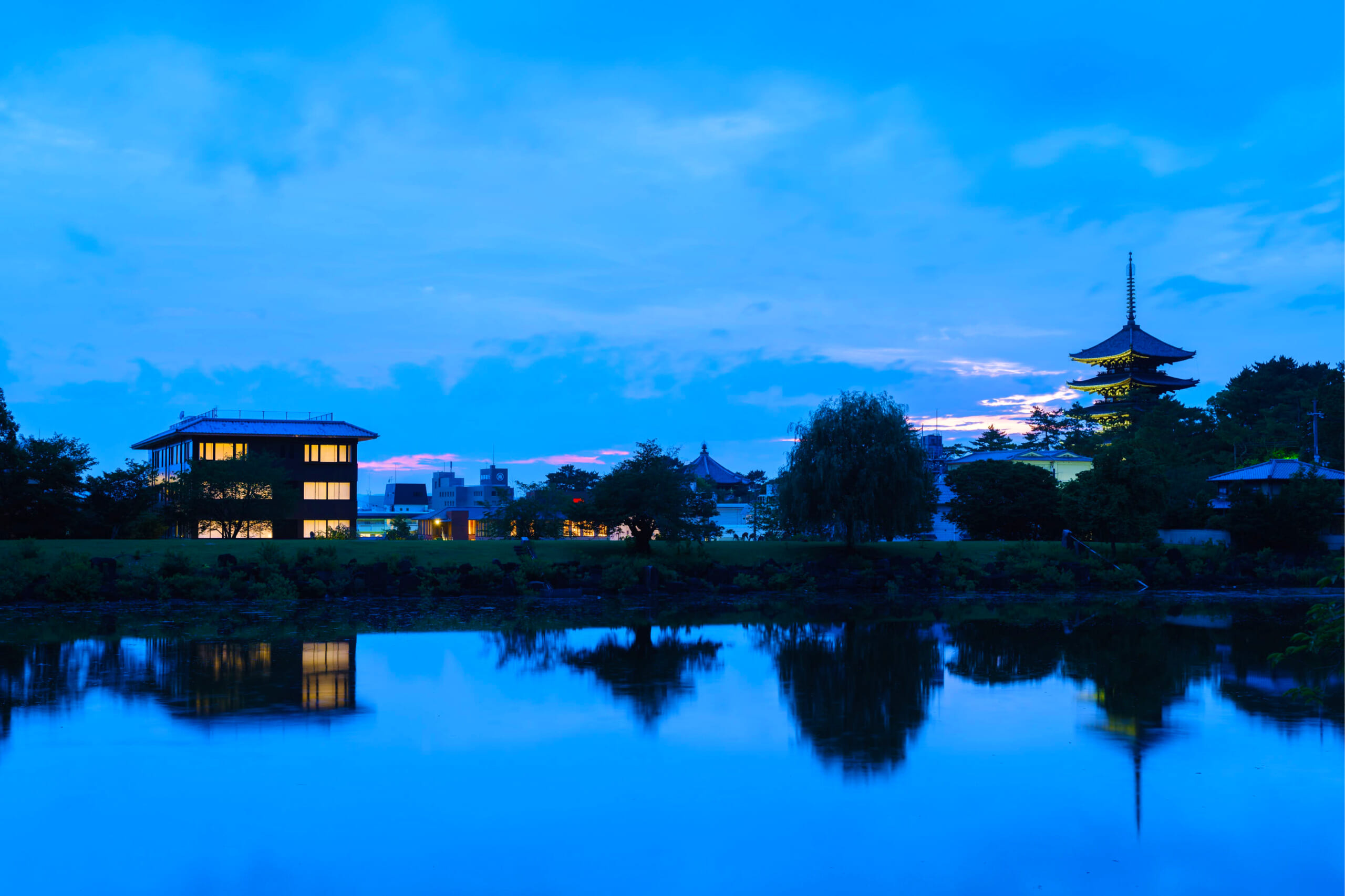
A Journey Through Japan’s Ancient History and National Treasures in Nara 3 days
Stay at the unique mountain hotel “Hotel Senjojiki” Meeting Point:…
-
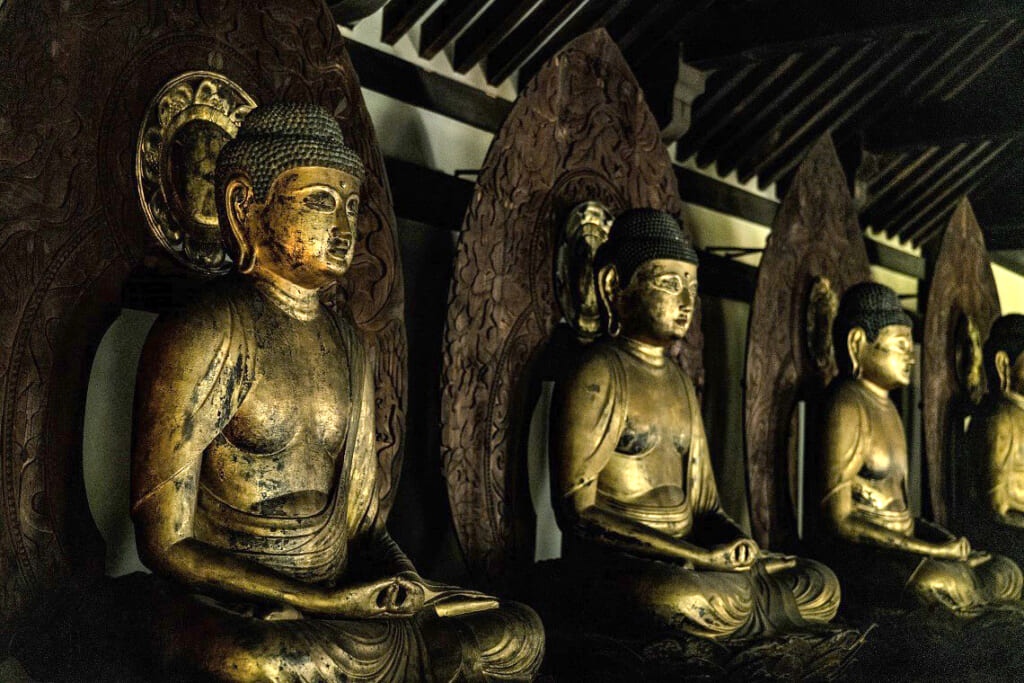
Exploring Buddhist Statues in Nara 1 day
A day touring Nara’s national treasures” Meeting Point: Hotel Finish…
-
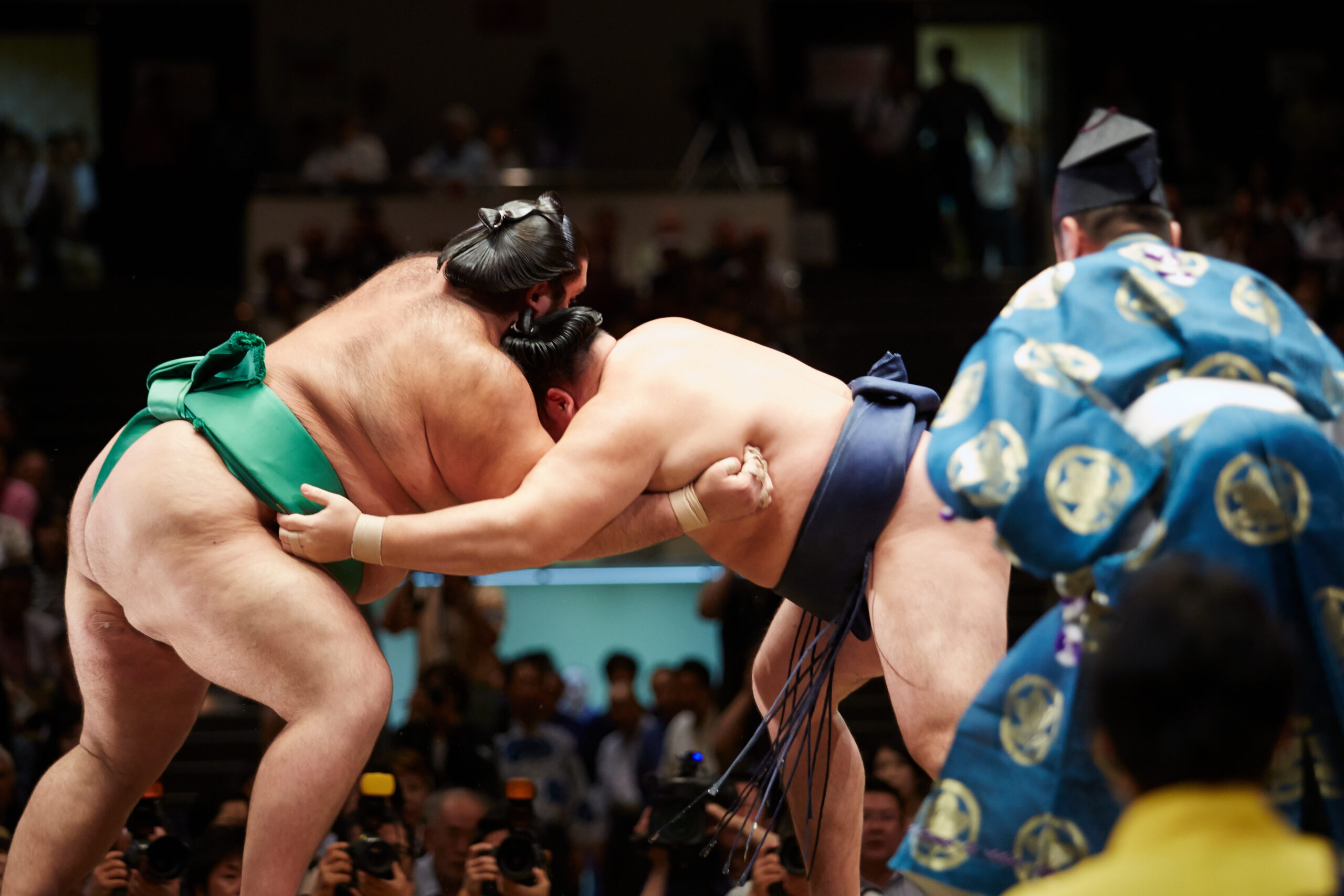
Grand Sumo Tournament Tour 1 day
Includes popular Grand Sumo tickets (Chair Seat S) Meeting Point:…
-
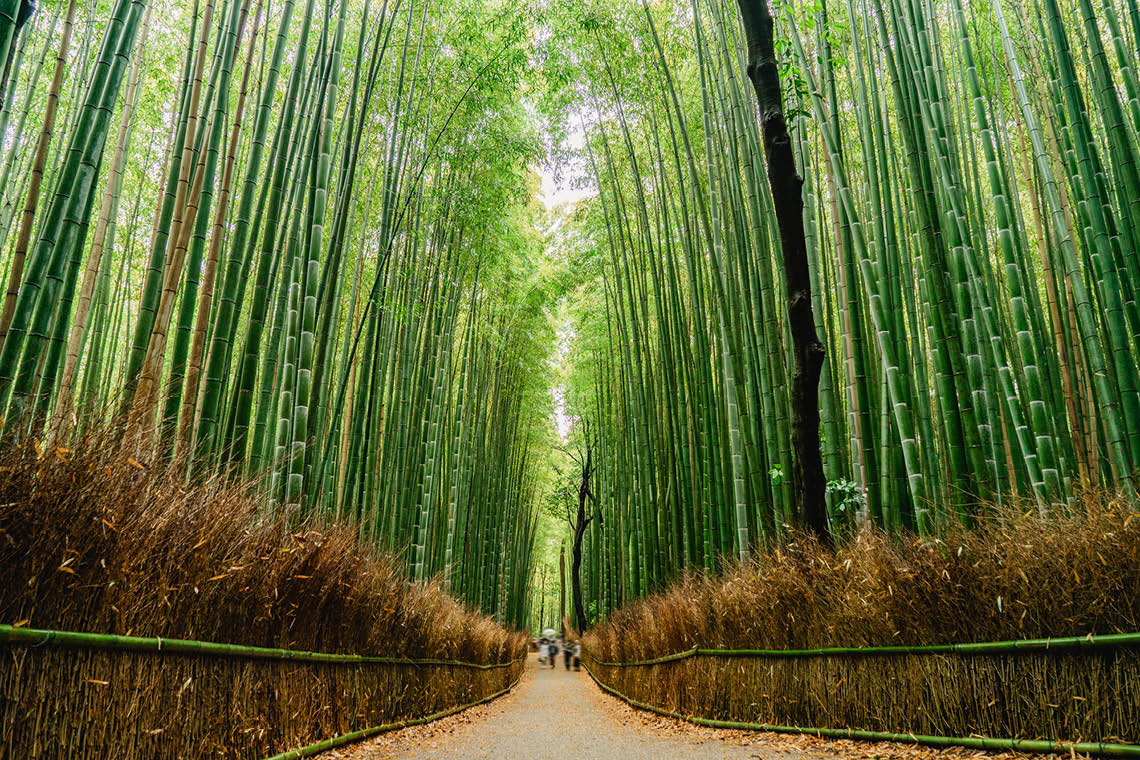
Japan Classic Route 11 Days
Recommended for first-time visitors to Japan. Touring Japan’s highlights Meeting…
Style and theme
-

A Journey Through Japan’s Ancient History and National Treasures in Nara 3 days
Stay at the unique mountain hotel “Hotel Senjojiki” Meeting Point:…
-

Exploring Buddhist Statues in Nara 1 day
A day touring Nara’s national treasures” Meeting Point: Hotel Finish…
-

Grand Sumo Tournament Tour 1 day
Includes popular Grand Sumo tickets (Chair Seat S) Meeting Point:…
-

Japan Classic Route 11 Days
Recommended for first-time visitors to Japan. Touring Japan’s highlights Meeting…